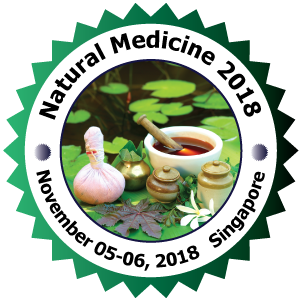
Lourdhuswamy Marianayagam Durairaj Lenora
Institute of Forest Genetics and Tree Breeding, Coimbatore, India.
Title: Harnessing Eichhornia crassipes, an invasive alien aqu atic weed for expanding horizons of shikimic acid, a precursor for swine/avian flu drug, Tamiflu®
Biography
Biography: Lourdhuswamy Marianayagam Durairaj Lenora
Abstract
Eichhornia crassipes (Mart) Solms commonly known as Water hyacinth belonging to the family Pontideraceae is a free floating warm water aquatic plant native of Brazil. It is an invasive aquatic weed causing serious threats to water ecosystems throughout the world and one of the world’s most obnoxious water weeds when not controlled. Kurichi kulam in Coimbatore is one of the major water bodies that enhances the ground water level around this area. It is often polluted due to invasion of this weed. The Coimbatore city municipal corporation made efforts to remove them periodically with considerable budget expenditure and hence its commercial aspects may be explored. E. crassipes is endowed with many potent phytochemicals like flavonoids, tannins, terpenoids, saponins, cardiac glycosides, quionones and many others. A large number of biologically active compounds have been extracted from this weed. E. crassipes is also considered as a promising alternate renewable source of shikimic acid, which is a critical ingredient used in the formulation of drug oseltamivir commercially known as Tamiflu®, an efficient inhibitor of the human influenza virus H1N1 of swine origin, H5N1 virus causing avian flu. Tamiflu is the only orally administered approved drug for treatment of influenza. Shikimic acid (SA) is mainly sourced from fruits of Chinese star anise (Illicium verum), native to China the lone supplier, but the source is not enough to meet the worldwide demand of shikimic acid, therefore, an alternate source is warranted in order to meet the worldwide demand of shikimic acid and an efficient new technologies needs to be developed for the enhancement of SA production from available sources. Interestingly, shikimic acid is detected in the leaves of E. crassipes which can be harvested in plenty and economically attractive, unlike the star anise that requires six years to harvest the fruits. Therefore, an attempt has been made for the search of shikimic acid from invasive alien weed, E. crassipes as an alternate renewable source of shikimic acid. It is estimated as 3.25% of shikimic acid in leaves of E. crassipes when compared to the Chinese star anise pods (1.77%) which is also higher than many of the reported plant species. Further this content can be enhanced by treating water hyacinth with glyphosate which is a cheap and easily available herbicide. Glyphosate acts as a competitive inhibitor of PEP and binds more tightly to the EPSP synthase-S3P complex where the enzyme is essentially inactivated. Deregulating the shikimate pathway results in the accumulation of very high levels of shikimate and hence application of glyphosate, considerably enhanced the shikimic acid production within a week. HPLC analysis of the extract evidenced that the leaves of E. crassipes contain higher shikimic acid concentrations (3.25%). It is proved from our study that GC-MS-MS analysis revealed the presence of secondary metabolites such as Goniothalamicin, Arborescidine 1, 8 Dipropoxyanthraquinone, Ambrosial Muricin, Camarolide, which account for their promising antioxidant and anticancer activities. The radical scavenging activity of the leaf extract of E. crassipes was found to be 24%. Anticancer activity was studied against human cervical cancer cell line (HeLa) and it showed mild anticancer activity on human cervical 200 μg/Ml. IC50 value was found to be 32.33 μg/mLby MTT assay against HeLa cell lines. cancer cell lines, HeLa with 17% growth inhibition at Therefore it is evident from the present study that commercial utilisation of E. crassipes could be an alternative for the management of the weed to overcome environmental and economic problems posed by it and can potentially be used to meet the emerging needs of both the domestic and the international market.

